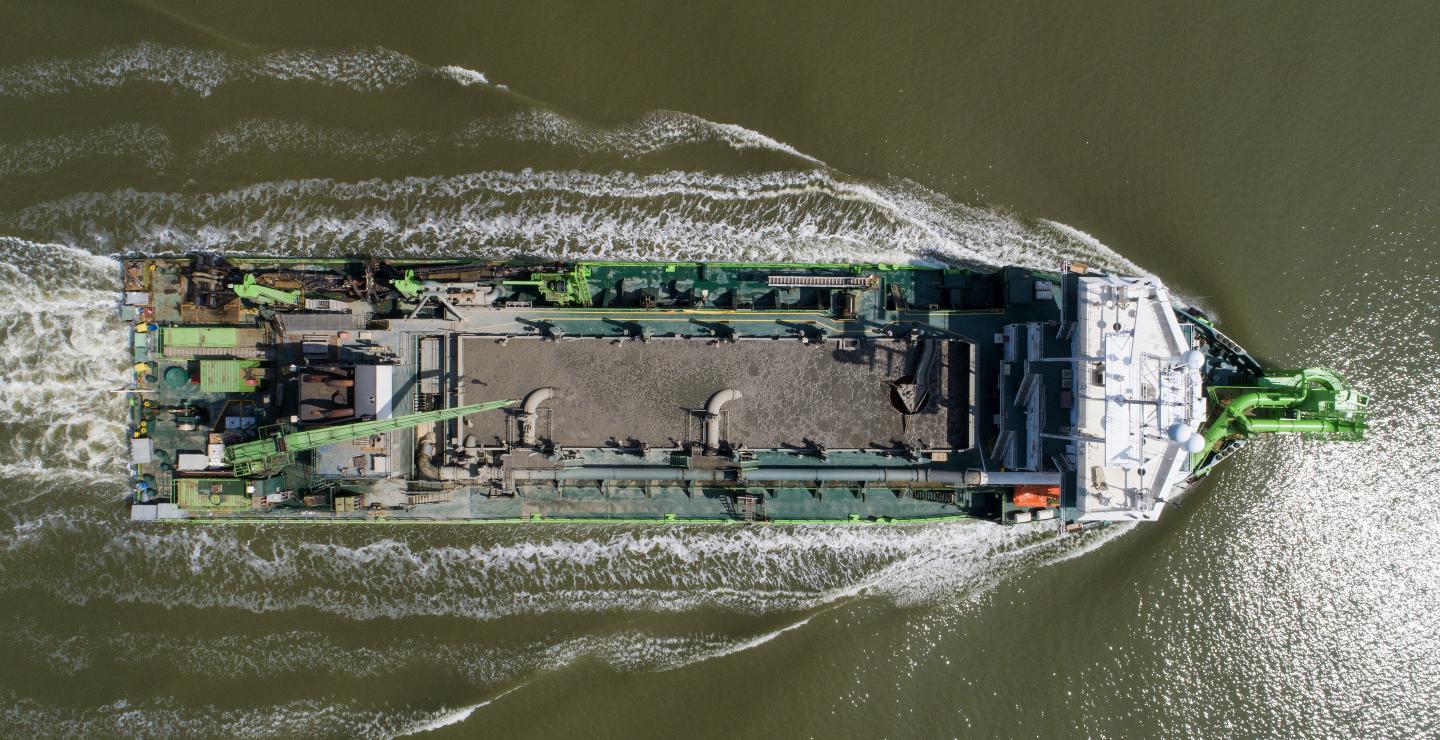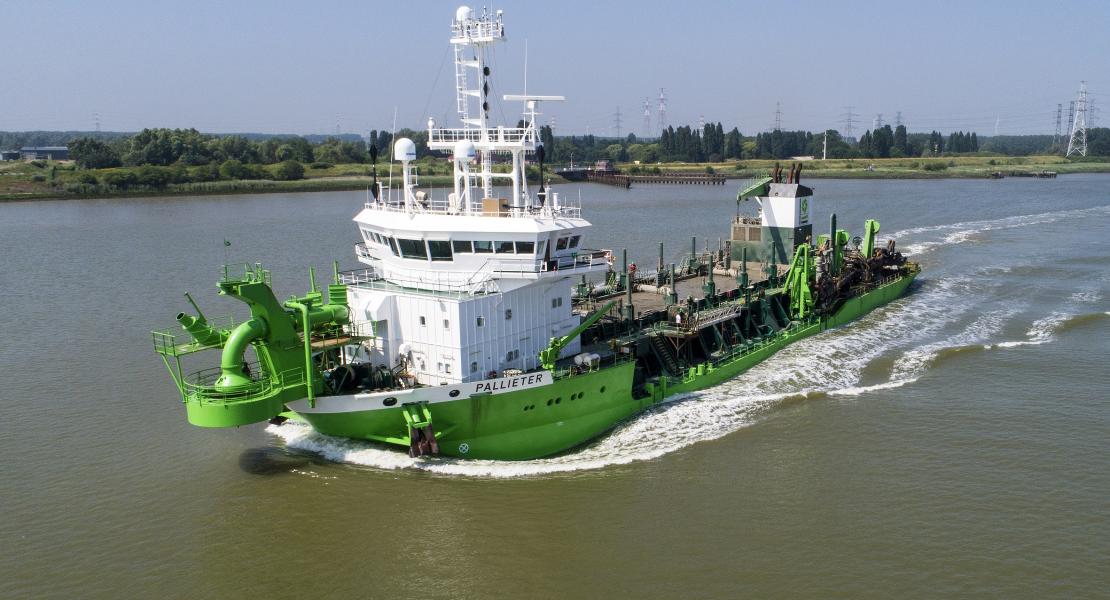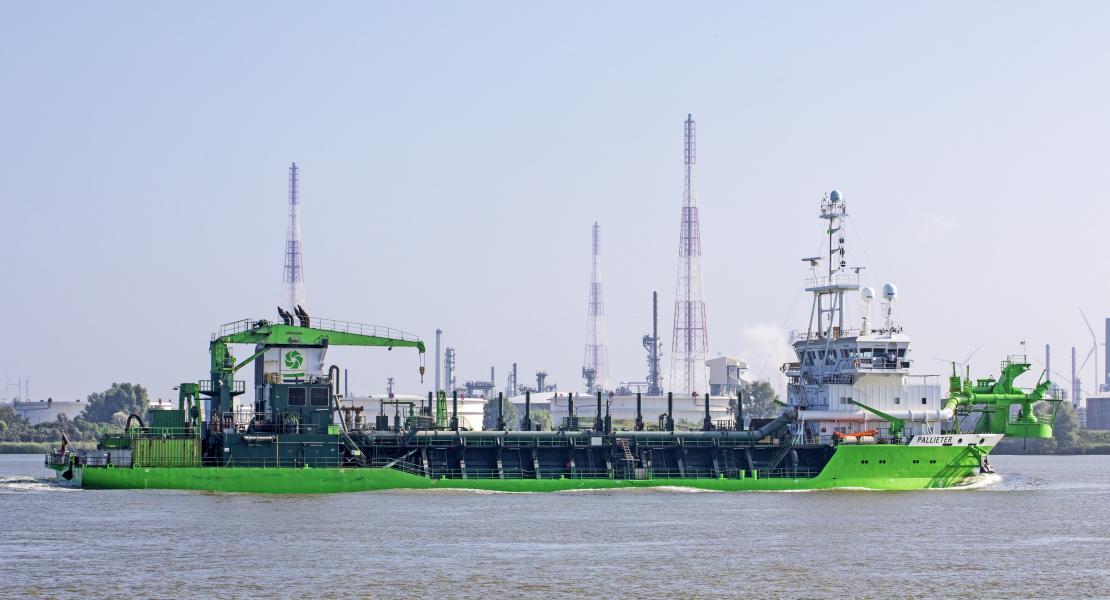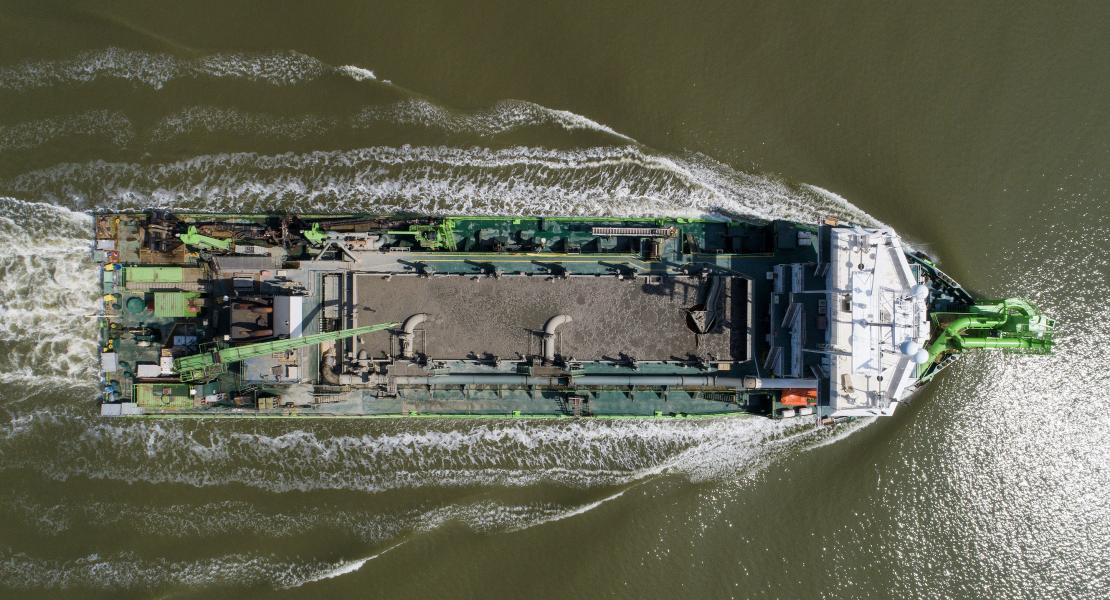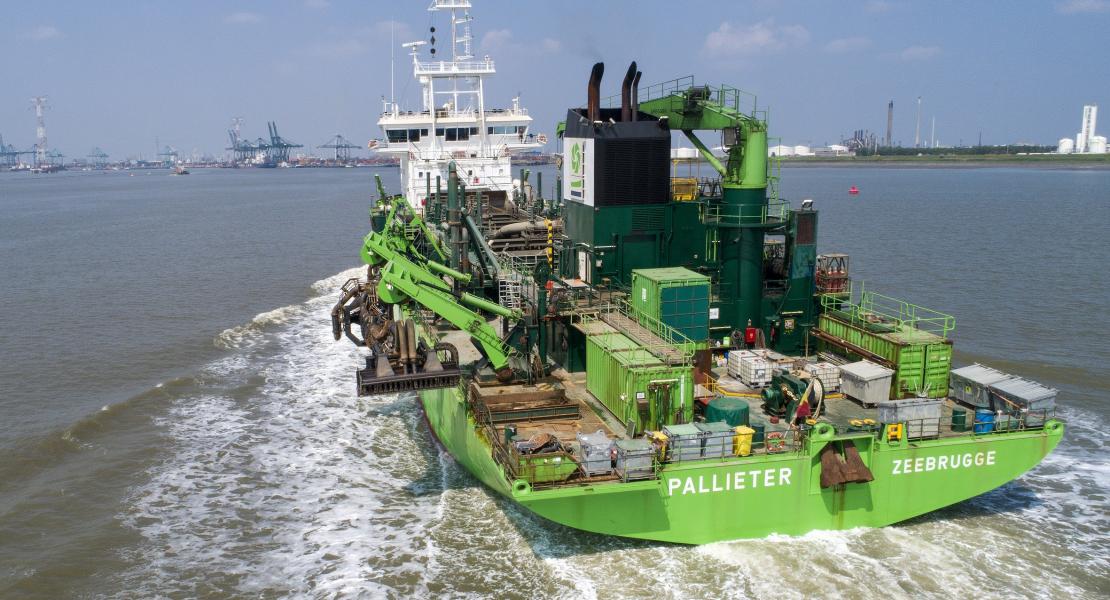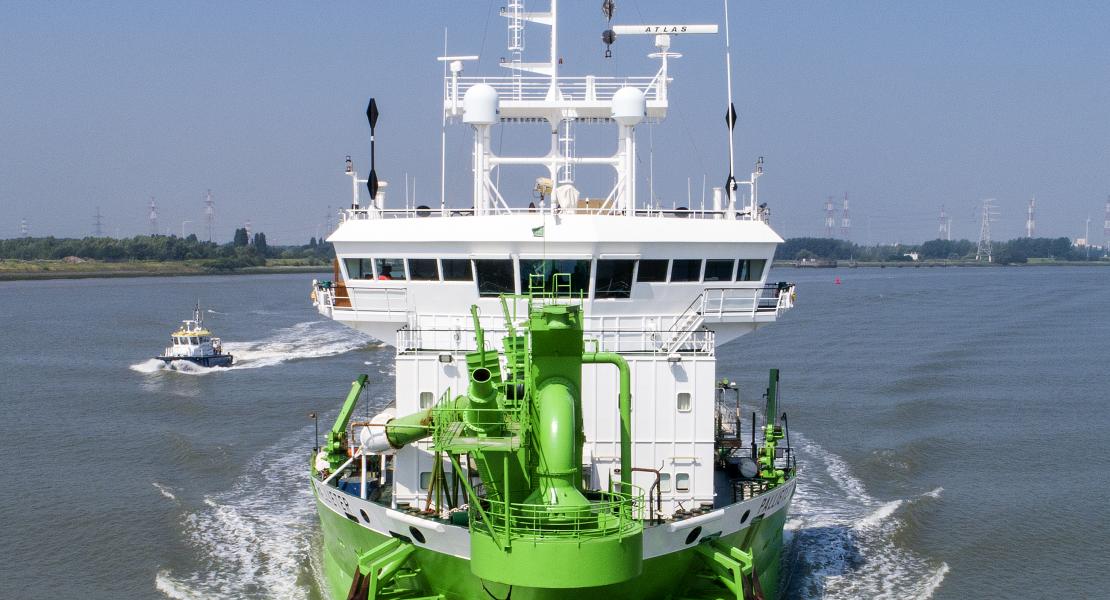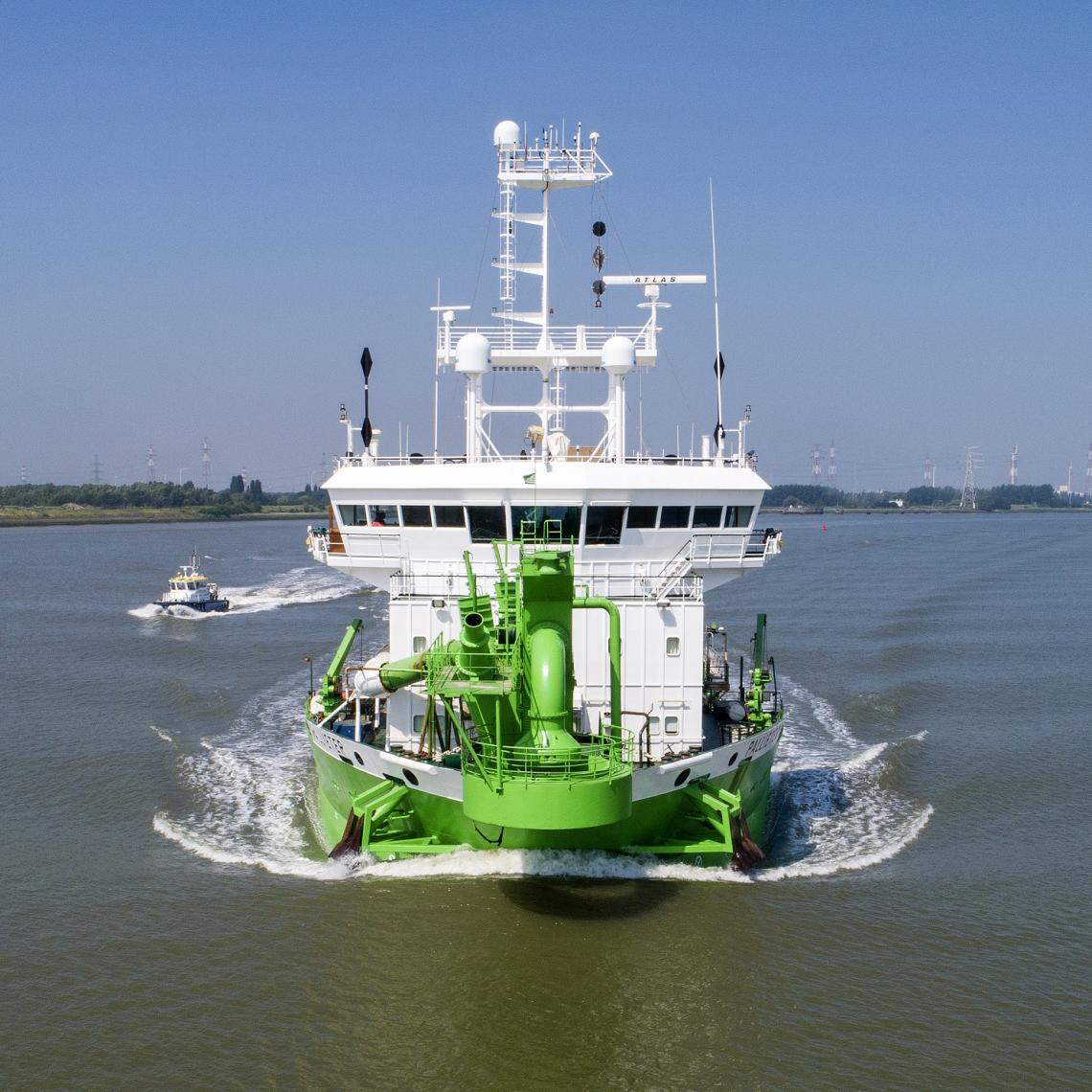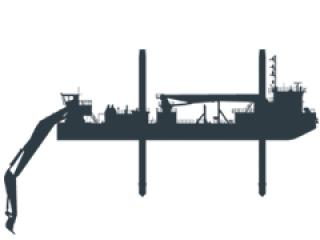Maintenance dredging and deepening in the navigation channel of the River Scheldt between Vlissingen and the sea lock at Wintam (Hingene). The River Scheldt is a tidal river characterized by strong currents, shallow sandbars and busy traffic.
The River Scheldt is the only maritime access to the Port of Antwerp so plays a vital role in the economy. Given its strategic importance, the Flemish Government guarantees a minimum depth for seagoing vessels along the trajectory towards the port. However, as there is a constant process of sedimentation, maintenance dredging is crucial all year round. As vessels are getting larger, several deepening dredging campaigns have been necessary in the past.
